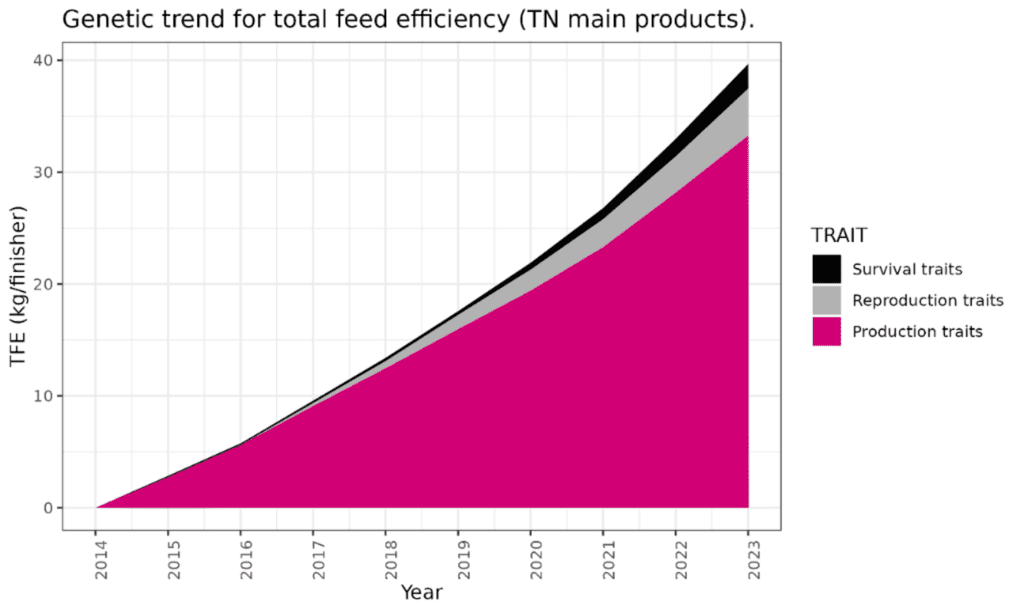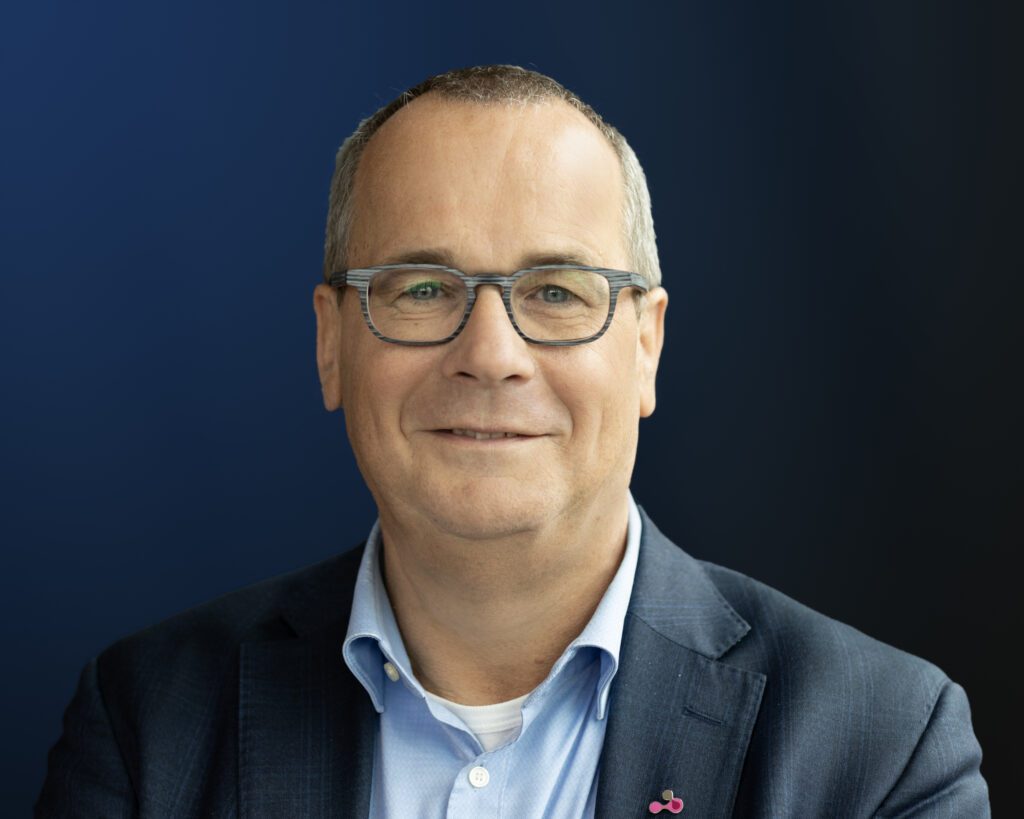The new Delta Norway boar test station will provide an annual improvement in total feed efficiency and reduced carbon footprint of 15 percent compared to the current pace.
By Eli Johanne Gjerlaug Enger and Egiel Hanenberg, both scientists
Feed production is the largest contributor to greenhouse gas emission intensities from pork production. Genetics, management, nutrition, and animal health are often the most important means of achieving an increasingly better and more sustainable production of pork. The new boar testing station, Delta Norway, has been built to meet all these requirements.
Over 4 kilograms of less feed is required per finisher per year
The genetic progress achieved in the Norwegian-bred lines Norsvin Landrace and TN Duroc over the past decade has made a significant contribution to reducing greenhouse gas emissions. Out of 66 traits in the genetic program, 14 have a direct effect on reduced emissions. The different traits all contribute to a decrease in total feed consumption and less manure produced.
Over nine years, cumulative genetic advancements across 14 key characteristics in the breeding program for the Norsvin Landrace and TN Duroc have led to a substantial enhancement in total feed efficiency. This improvement translates to approximately 40 kg less feed needed per finisher produced.
Text continues after the graph


The progress originates from distinct breeding objectives tailored to each breed. The Norsvin Landrace focuses on dam traits, whereas the TN Duroc emphasizes sire characteristics.
For the Norsvin Landrace line, several traits associated with reproduction, maternal characteristics, and robustness contribute to an overall decrease in total feed consumption.
For the TN Duroc, increased feed efficiency mainly contributes to lower total feed consumption for this breed. TN Duroc has also made great progress in growth parameters while, at the same time, progress has been achieved for robustness characteristics, such as bone health and survival
67 percent increase in feed registration data
Topigs Norsvin expects the genetic progress to continue in the years to come. Several characteristics in the breeding goal have the potential to contribute to an acceleration in genetic progress.
The new boar testing station, Delta Norway, will play a significant role in this progress. The increase in test capacity, from 3,000 to 5,000 tested boars annually, will increase the amount of feed registration data by 67 percent. This will make a significant contribution to reducing the total carbon footprint, as feed efficiency is the most important factor in reducing greenhouse gas emissions from pigs.
The new facilities also contribute to increased breeding progress with increased selection intensity in boar selection. The intensity is adjusted from 120 out of 3000 to 120 out of 5000 elite AI boars in relation to tested boars.
In total, it is estimated that Delta Norway will provide an improvement in total feed efficiency of 15 percent, compared to the current yearly genetic improvement.
Delta Norway contributes to further reduction in carbon footprint
Our clients’ annual improvement in reducing greenhouse gasses by using pigs closely linked to our genetic progress is 7.1 kg CO2-equivalent per year per finisher. This includes greenhouse gases (GHG) related to both feed and manure, and give a global reduction of 1 million tons of CO2-equivalents (Scope 3 GHG reductions) and an annual decrease in cropland required for feed production of 130,000 hectares.
With the Norsvin Landrace and TN Duroc lines initially showing a “business as usual” improvement rate of 7.1 kg CO2-equivalents per year per finisher, we anticipate a boost to 8.2 kg CO2-equivalents per year per finisher with the introduction of Delta Norway. This will contribute to the emission cuts being even greater, and to more area being saved.
In addition, Delta Norway will facilitate several projects that focus on the pig’s resource utilization, and is now ready to breed directly for protein efficiency. Better protein efficiency strengthens the pig’s ability to utilize feed raw materials, and this will result in less nitrous oxide from livestock rooms and manure. Therefore, improving protein efficiency is important as a climate measure as well as from a resource and self-sufficiency perspective.
Our responsibility to contribute to a lower carbon footprint
Carbon footprint is a growing topic for all pork producers around the world. As a leading genetics company, we feel it is our responsibility to contribute to a sustainable pig production through balanced breeding, research, innovation, service, and support.
In a time when climate change and the reduction of greenhouse gas emissions have a higher priority than ever, the pig plays an important role in providing premium proteins in a sustainable way to a growing world population. A pig can digest low-quality feed and efficiently convert it into high-quality proteins with low greenhouse gas excretion.


Hans Olijslagers, CTO
This makes pork one of the most sustainable protein sources, comparable to fish and chicken and better than cheese or beef.
Topigs Norsvin is the leader in and founder of balanced breeding. This gives us an advantage in tackling today’s challenges. We increase resource efficiency year after year while, at the same time, focusing on other factors such as robustness. Taken together, this results in less feed needed, fewer disturbances, and fewer losses. This leads to a lower carbon footprint in our customers’ pig production chain. Together with our customers, this approach contributes to reducing the impact of pork production on our environment and better animal welfare.
New test and innovation center Delta Norway
A new high-tech test and innovation center will open this year in Norway. Delta Norway has an annual test capacity of 5,000 young boars from the Norsvin Landrace and TN Duroc lines.
New technical solutions and infrastructure for large-scale data capture will significantly boost our genetic program. Besides individual feed intake registration and performance measurements, the extensive use of sensors, cameras, and artificial intelligence will make it possible to track pigs continuously and register fluctuations in their environment and behavior.
The construction of Delta Norway will be completed in June 2024. The plan is to receive the first animals in July 2024.


